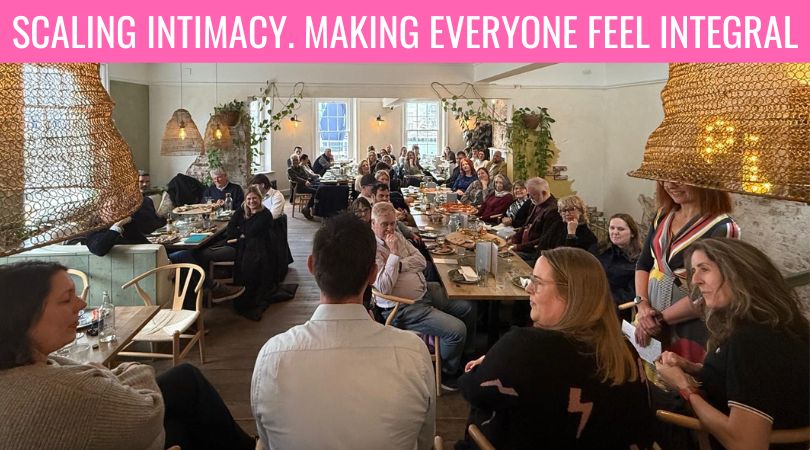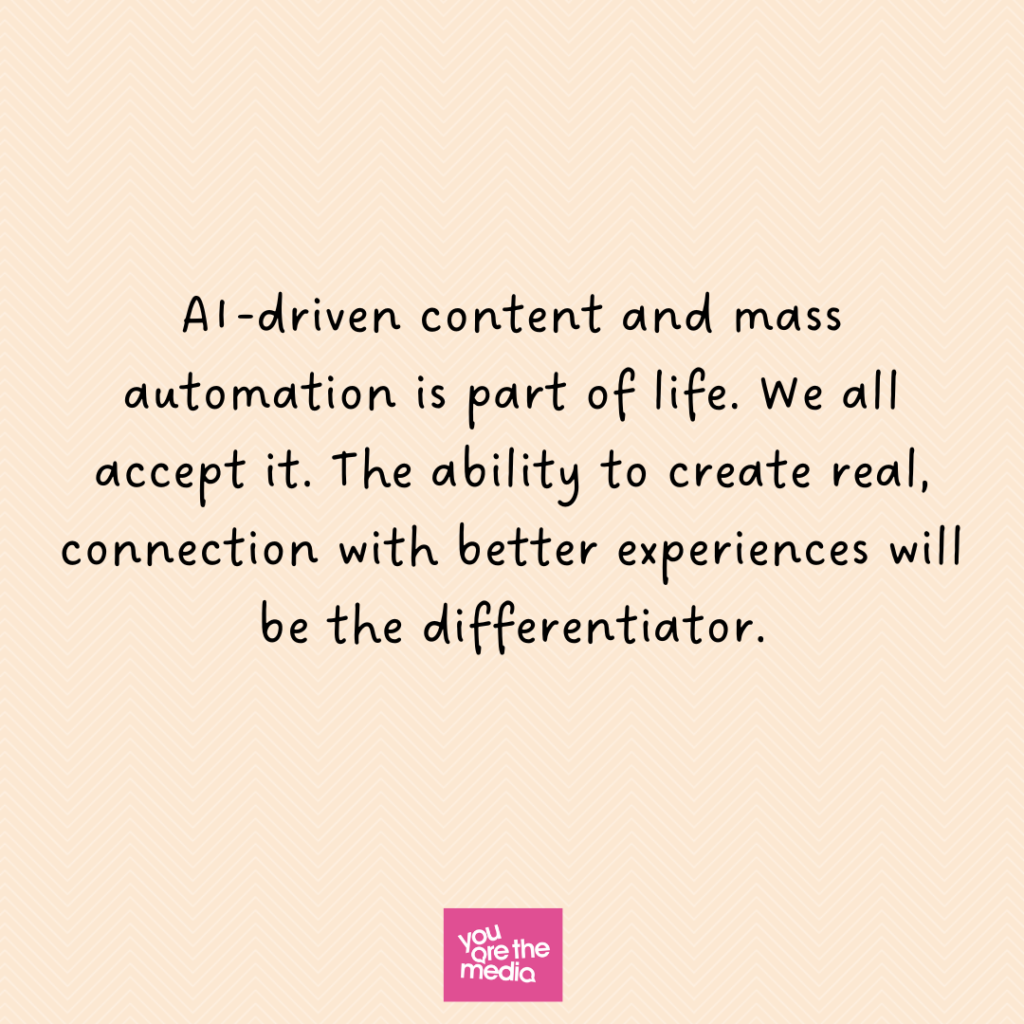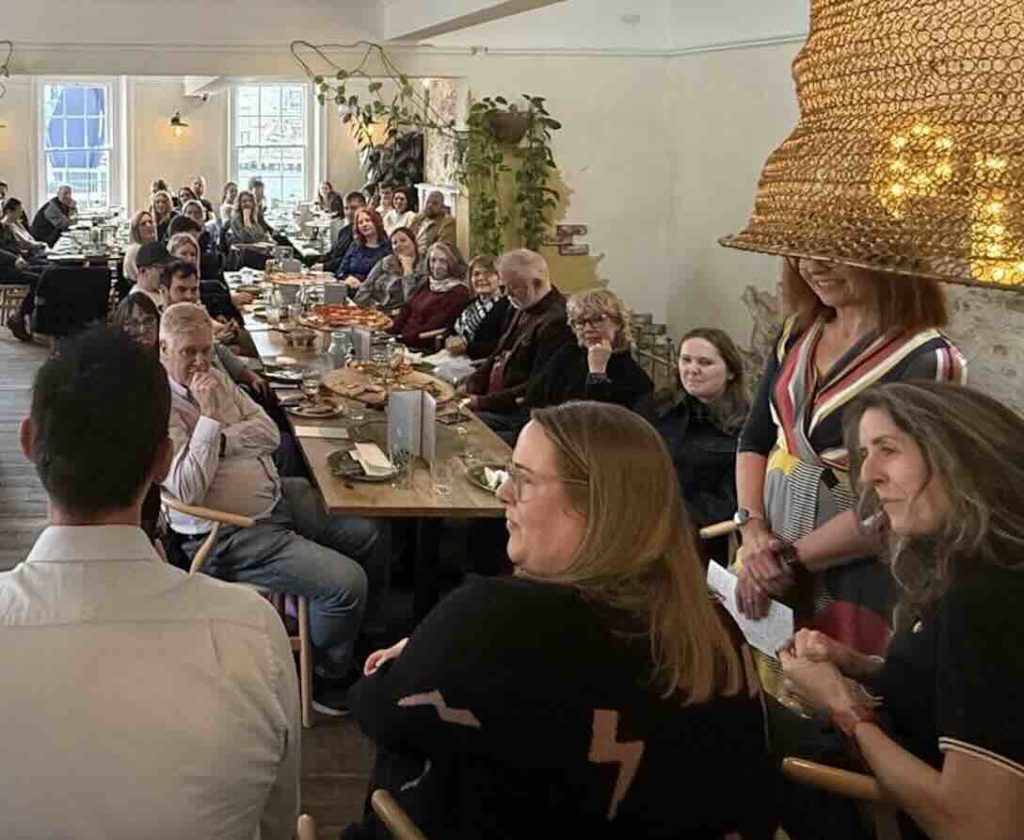Let’s learn and create together!
Book your placeScaling Without Losing Soul. Making Growth Feel Personal

Making an entire effort feel intimate, even during growth helps people feel close and connected.
Scaling intimacy isn’t just about maintaining personal connections, it’s about finding creative ways to make people feel integral, no matter how big the community gets.
In 2019, I started to explore this concept of scaled intimacy. This is the ability create meaningful connections, even as an initiative expands. Back then, I recognised more people were attending events and we began to progress to a conference themed event. I viewed this as a way to bridge the gap between reach and relationships.
You want to be noticed and included in a community.
Over the years, I’ve been figuring out how we don’t need mass appeal to build something that is valuable to other people. You need the right people stay.
Fast forward to 2025, the challenge of scaling intimacy has intensified. We’re seeing automation around us, visibility dictated by algorithms and spaces obsessed by ‘how to’ (you can read more about that here).
People want connection, but they can also sense when it’s forced or when we become the transaction. If you’re building something meaningful, whether a community or an audience driven business, how can you keep that personal touch as more people begin to engage with you?
I recognise this is the defining challenge for anyone who wants to build an initiative that people can support. It’s how people feel seen when more people are showing up.

Explaining Scaled Intimacy
The idea of scaled intimacy is creating personal moments that matter. As your audience grows, people still like to feel they are part of something special. It’s the different between someone feeling like they’re just another subscriber versus feeling like they belong.
As a simple example, during our Lunch Club events, I make it a point to welcome each person by name, whether we are familiar with each other or not. For Creator Day, which welcomes hundreds of attendees, knowing everyone’s name may be slightly more challenging. However, I will do my best to thank each person individually for attending and for their commitment.
This approach to connecting with people aims to foster closeness. One example is sending a video message to welcome a new subscriber. I used to do this, but it became difficult to keep up with the number of new subscribers. Now, I send a short email sequence inviting subscribers to reply to me.
This way, I can personally respond to their emails. However, if you encourage people to reply, you need to be available to respond when they do.
Another way that I want people to know that they are seen, is when a person subscribes, I’ll then connect with them on Linked with a ‘thanks’ DM. If someone is willing to pay you attention, the least you can do is find a way to make it personal.
This is where the challenge (and opportunity) of scaled intimacy exists. How do we apply this idea in a way that fits our own communities, businesses, and creative work?
What Gets In The Way?
Many ways stop people from getting this right. No one wants to be ignored, but sometimes finding that personal touch can take a back seat.
For instance, businesses:

When you choose to automate everything, you create a distance between yourself and others. It’s tempting to rely on pre-scheduled content and mass emails, but if you aren’t available when someone tries to reach out and there’s no real-time interaction, people will notice.

When you have a small community, people know each other, when more people become involved it starts to feel different because of volume. If the delivery and design of activities do not foster a sense of connection and closeness, engagement and participation drops.

When you want to speak to everyone, it’s easy to increase the volume of posts and drive for attention. However, just because you are visible, it doesn’t mean people feel connected or want to join in.
The YATM Approach To Scaled Intimacy
Scaled intimacy is the foundation of everything we do at YATM.
It’s why the community is still here, not because of the need to chase more, but because of the relationships with the people who are a part of the community and the connection people have with each other.
Here is how we make it work.
It Is All About The Conversation, Not The Broadcast
Every live event we have, we encourage people to be themselves and recognise that when they engage in conversation with other people, they are all connected through the shared experience of YATM.
The Thursday newsletter serves as a connection point for everyone. While I will include prompts inviting people to join the YATM Club and participate in events, the newsletter is designed to feel personal rather than resemble a faceless business update.
The newsletter will feature others from the community, so they have an opportunity to be seen. This means that the community gets to reach out to each other and know one another, not just a central figure.
The thinking behind this is the encouragement for people to be a part of something, rather than consuming content.
The Small Intentional Moments Matter
Scaled intimacy lies in the detail. This could be reaching out to someone to be a part of the People Of YATM project, or if they’d like to start the newsletter. It’s the small gestures that reinforce the importance of being present in the moment.
The People Of YATM series is where other people share what being a part of the community means to them. T
his initiative promotes their stories through our newsletter, LinkedIn, Instagram, and our WhatsApp group. However, it’s not just about promotion; it’s about recognising that everyone matters. Each interaction holds significance, serving as a way to say “thank you” for being a part of our community.
Participation Is Rewarded At YATM
One of the biggest shifts in building community is moving from an audience to an ecosystem. People aren’t just passive viewers; they’re active participants.
One example from YATM is to provide all members of the YATM Club (our membership space) with the opportunity to host a Lunch Club event. This initiative elevates engagement, rewarding commitment with the chance to take on a leadership role.
I want everyone who attends Creator Day to feel part of a collective experience rather than just attendees. We kick off with a welcome evening called Failed Nights and follow with an after party at La Mias on Poole Quay for tapas. For those brave enough, we close Creator Day with a sea adventure on Friday morning. These risky activities foster stronger bonds and connections amongst each other.
YATM is now a platform dedicated to fostering belonging, access to each other, and participation.
Build For Depth
It is tempting to always want more, but when you look to build stronger relationships with the people who are already present, it adds a new dynamic. For instance, it’s people from the YATM community who lead events. This is built from connection and trust and providing people an opportunity to be visible in ways they may never have thought of before (hosting, presenting or part of the panels).
Instead of asking, “How do we get more people?” the better question is, “How do we create an experience so good that people never want to leave?” It’s good to have people wanting to join in and become more involved.
Let’s Round-Up
AI-driven content and mass automation is a part of our world today. We all accept it. The ability to create real, human connection will set us apart.
If you are building an audience, growing a business, or leading a community, the future lies not in becoming bigger, but in making the people who are already with you feel closer.
It’s not about how many people show up, but how many feel seen. That’s what makes those who are already here feel they belong.

Build Your Community
A brand new programme from Mark Masters for businesses wanting to make that next growth step.
Find out moreYATM Club
Where non-conformist business owners come to work, learn and make friends. Click here

